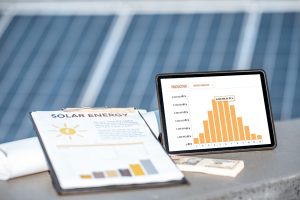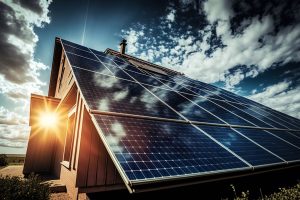
The Importance of Battery Certification
Discover the importance of battery certification for your solar power system. Learn why UL, CE, and CB certifications are essential for safety and performance.
Solar systems allow homeowners to harness solar energy during the daytime hours, but as it cannot store surplus electricity for later use by your home during peak sunlight hours, any excess is sent back into the grid at 1p/kWh under its Smart Export Guarantee (SEG) tariff – offering greater financial benefit than importing energy directly from National Grid at this point in time.
With battery storage, however, you can store up your solar energy for later use – saving on grid electricity usage while spending more on green energy sources – decreasing both bills and carbon footprint.
Installing batteries to an existing solar system can be a relatively straightforward retrofit, particularly if your AC-coupled system allows. In these instances, the battery won’t connect directly with your panels; rather it connects via your generation meter instead. Your energy provider may need to install a smart meter so they know you are being paid accurately for any electricity you sell back to them.
Other renewable energies available, besides PV solar panels, include wind power, hydropower and biomass; however, solar photovoltaics is the most prevalent renewable option available today.
Add battery energy storage to your grid-tied solar system as an easy and cost-effective way to increase self-sufficiency and decrease reliance on the grid. Your solar panels will use their stored power during periods of high demand or grid outage to power your home, saving money on your electricity bill – plus taking advantage of time-of-use pricing could yield even further savings!
There are various approaches to adding batteries to a solar system, depending on its existing setup. One simple solution is installing an all-in-one unit which combines charge controller and inverter functionality – this is also often cheaper than changing over to hybrid inverters that could void your warranty.
Another option is connecting a battery directly to an existing inverter using DC coupling, though this requires more work to set up and may not work with all solar systems. However, it provides greater solar system output because more can be taken advantage of with hybrid inverters.
Most solar energy systems are grid-interactive, meaning they connect directly to the power grid and export any excess energy back when it’s no longer needed at home. By adding battery energy storage, however, your solar panel may generate more power than necessary and store it instead in your battery bank – saving money on electricity bills while simultaneously decreasing reliance on fossil fuels and greenhouse gas emissions.
Cost of installing solar batteries depends on factors like brand and size of battery as well as how much energy you want to store in it. Prices are measured in Kilowatt-Hours (kWh), with more expensive batteries offering larger capacities.
To save on costs when adding batteries to your system, the easiest and cheapest way is to consult with a solar installer who offers both panels and storage as part of their package. Doing this allows you to schedule the installation all at once while saving on labor expenses – plus it may help qualify your system for up to 30% federal tax credit!
Homeowners living in states with high electricity rates or utility companies that charge fees for net metering will find batteries essential to saving more of the energy produced and providing backup power in case of outages. A battery will enable homeowners to save on energy production while also providing essential backup for critical loads during outages.
Many solar companies provide financing options for their systems, enabling you to pay over time. While owning your system outright may be more cost-effective than borrowing money from lenders directly, not everyone has enough upfront capital available for that type of purchase – in which case solar loans could be an ideal alternative that offers low interest rates and are available regardless of credit scores.
Some homeowners install solar systems with the intention of adding storage later, knowing they may require it later on. When this occurs, it is a good idea to contact their battery manufacturer as they can often help locate an installer who is compatible with their product. Homeowners may also find installers through referrals from family and friends or by searching online.
Finding a trustworthy local installer to work with is the cornerstone of solar adoption, so make sure that when selecting one it takes as much care and research as possible before making a decision. Compare quotes before making your selection.
Once you’ve selected an installer, they will visit your home to assess your roof and electrical panel to see if solar can be installed successfully. Usually this assessment process takes between one to two weeks to complete.
Once the solar system has been installed, your utility company will visit and connect it to the grid. This often involves installing a new electric meter capable of tracking solar energy production as well as having equipment inspected by their representative – this may take up to two months, making it imperative that you choose an established solar installer who will guide you through this step.

Discover the importance of battery certification for your solar power system. Learn why UL, CE, and CB certifications are essential for safety and performance.

Discover the truth about solar panels and fire hazards. Learn what causes solar panels to catch fire, how you can prevent it, and what to do in case of a

Discover the truth about solar panels and fire hazards. Learn what causes solar panels to catch fire, how you can prevent it, and what to do in case of a